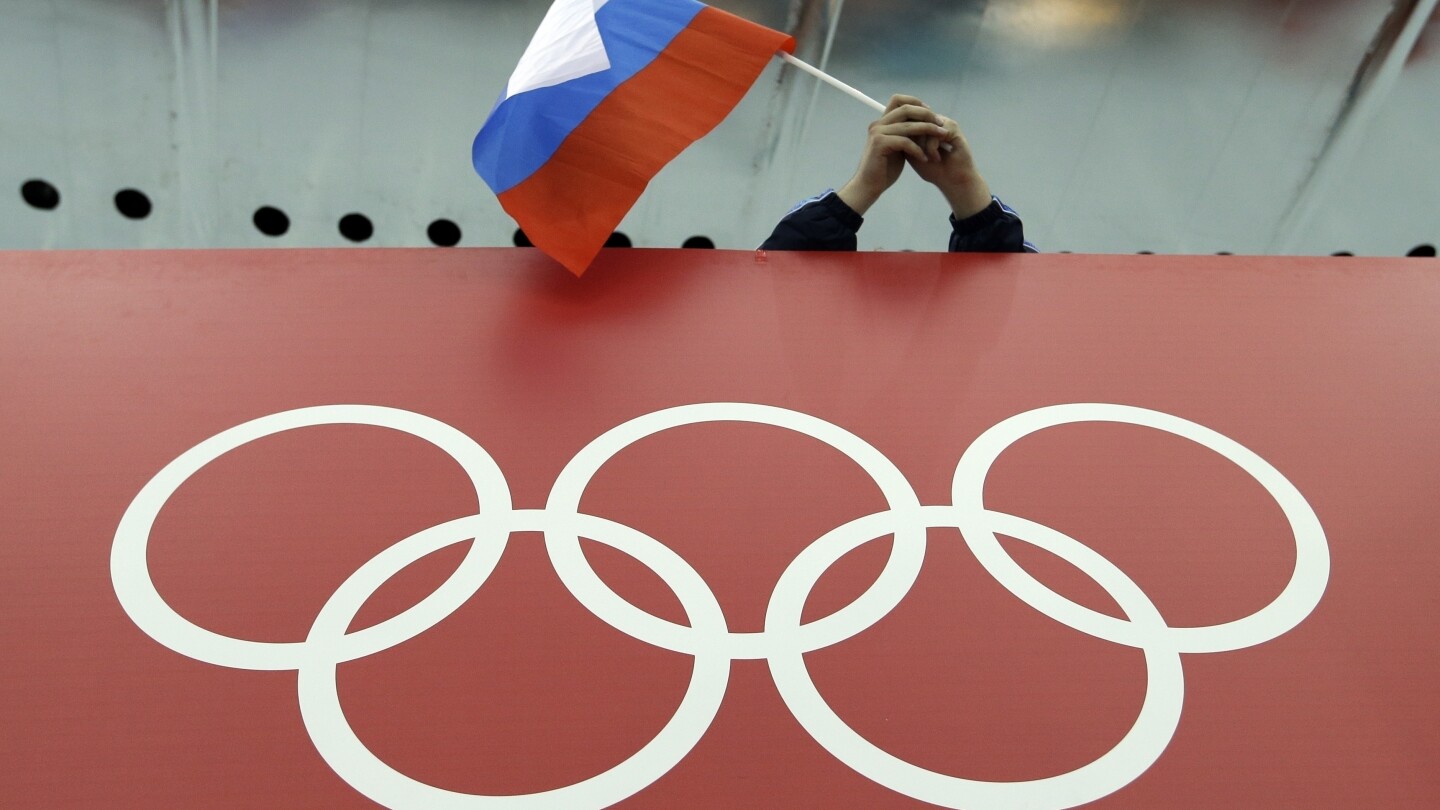COLORADO SPRINGS, Colo. (AP) — Two of Russia’s top swimmers have been drug tested by their country’s anti-doping agency only twice apiece in 2023, part of a larger trend in the country that adds an extra layer of uncertainty to the IOC’s decision to allow some Russian athletes to compete next year at the Paris Olympics.
The Russian Anti-Doping Agency lists on its website the number of tests it gives to individual athletes, in following a best practice it had long been urged to adapt. It has administered some 10,500 tests in 2023 — a number the IOC highlighted in a memorandum signed by key members of the Olympic movement at a summit last week that “emphasized that doping controls in Russia continue.”
Among those tests, only two each were given to defending 100 and 200-meter backstroke champion Evgeniy Rylov and 50-meter backstroke world-record holder Kliment Kolesnikov.
Another medal contender, Evgeniia Chikunova, has been tested three times by the agency. A pair of Russian silver medalists in fencing, Pavel Sukhov and Nikita Glazkov, have received only one test each in 2023. Five gymnasts who led the Russians to gold medals in the men’s and women’s team competitions have, combined, been tested nine times.
All these athletes still have to qualify for the Paris Games, and a big part of that will include determining whether their sports — and the IOC — will allow them to compete.
Rylov, for instance, has said he would not sign a declaration stating he does not support the war in Ukraine, which is a requirement set by the IOC for athletes to compete. Gymnasts are in limbo due to differing postures taken by international and European governing organizations in that sport.
America’s anti-doping chief, U.S. Anti-Doping Agency CEO Travis Tygart, worries about a level playing field in Paris.
“Things are not as they are being portrayed — to say that Russian athletes have been held to the same standards as other athletes is a slap in the face to clean athletes,” Tygart said.
Some of America’s top athletes — such as Noah Lyles (7), Sha’Carri Richardson (6), Ryan Murphy (9) and Katie Ledecky (9) — have been tested double or triple the number of times as their potential Russian competitors. Simone Biles has been tested four times in 2023, which is more than any of Russia’s top gymnasts.
Thorough testing of athletes by their national anti-doping agencies, especially at times when they are not competing, is considered a cornerstone of an effective anti-doping system. At least three to five tests is the minimum standard to ensure effectiveness of an “athlete biological passport” — an advanced data set that tracks athletes’ blood samples over time to detect doping.
An email sent by The Associated Press to the Russian Anti-Doping Agency’s communications department asking for comment was not immediately returned.
The rigor of Russia’s testing during a period in which its anti-doping agency has been deemed noncompliant with World Anti-Doping Agency rules has been a troubling issue in the near decade since Russia’s state-sponsored scheme to dope athletes for the Sochi Olympics in 2014 was revealed.
Those questions persisted in the months heading into the Tokyo Olympics, when testing numbers decreased sharply across the globe because of restrictions imposed during the COVID-19 pandemic.
Among the statistics shared by the IOC last week was that the International Testing Agency, which tests athletes from various countries in several sports, conducted “well over” 400 out-of-competition tests on Russians in 2023 — a number that would augment the 10,500 conducted by the country’s own agency.
But based on an analysis by USADA, the ITA tests have limited reach in any country. USADA recently concluded that tests done by international bodies only covered about 11% of U.S. athletes on its Olympic team, while the other 89% were subject only to testing done by the agency itself.
An analysis produced by USADA that was obtained by AP and discussed at recent meetings involving U.S. Olympic leaders showed that around 76% of 360 Russian summer athletes ranked in the top 10 in their sports since 2021 had been given two or fewer tests this year.
U.S. Olympic and Paralympic Committee chairman Gene Sykes, who signed off on the IOC memorandum, said once Russian athletes eligible for the Olympics are identified “then there needs to be a lot of work done to make the entire system confident that the athletes are fully compliant.”
WADA said it continues to monitor Russia’s anti-doping agency and is working with both the ITA and authorities from the individual sports to try to ensure Russian athletes are tested appropriately.
“WADA remains skeptical and wary when it comes to Russia,” WADA spokesman James Fitzgerald said. “We must remain vigilant and ensure that no stone is left unturned when it comes to verifying that all the proper testing has taken place in advance of Paris.”
___
AP Olympics: https://apnews.com/hub/2024-paris-olympic-games

